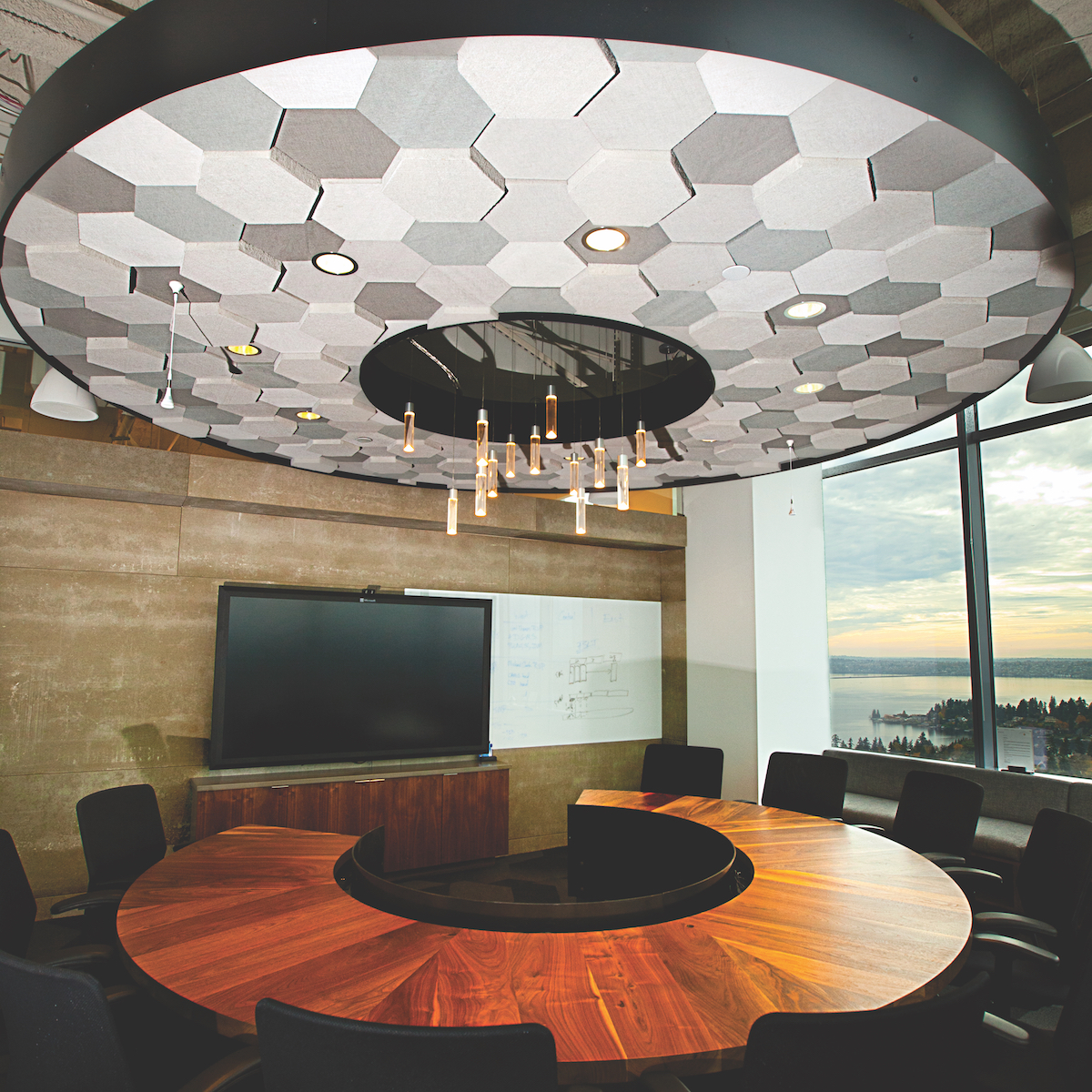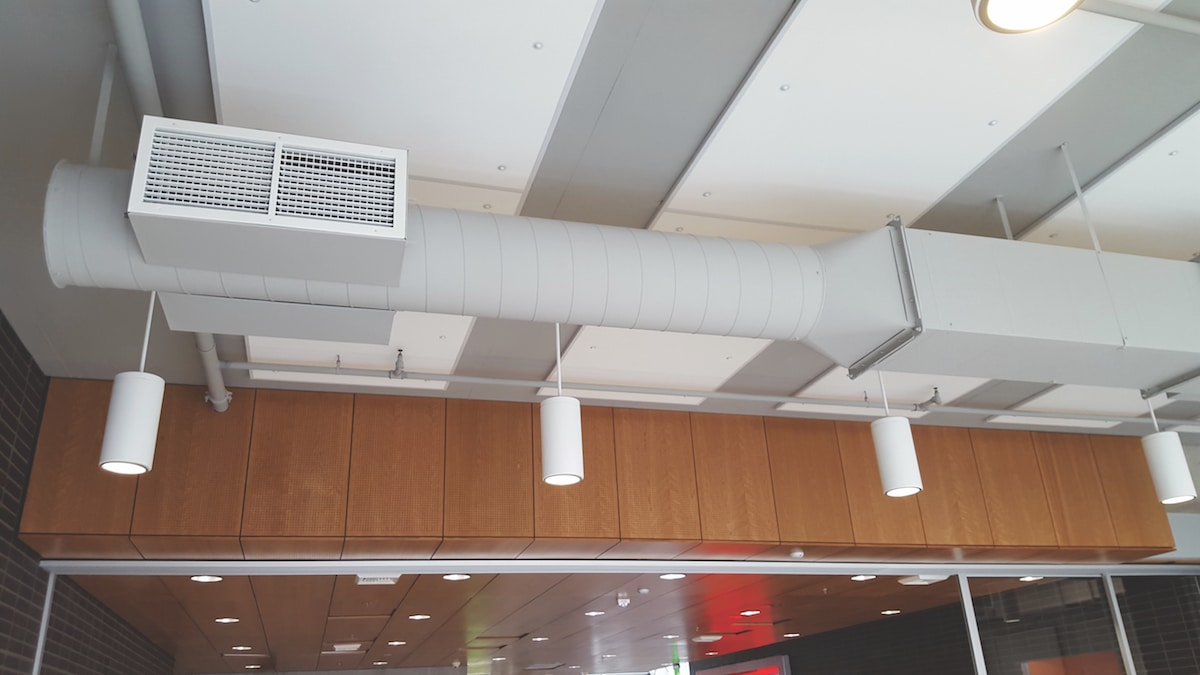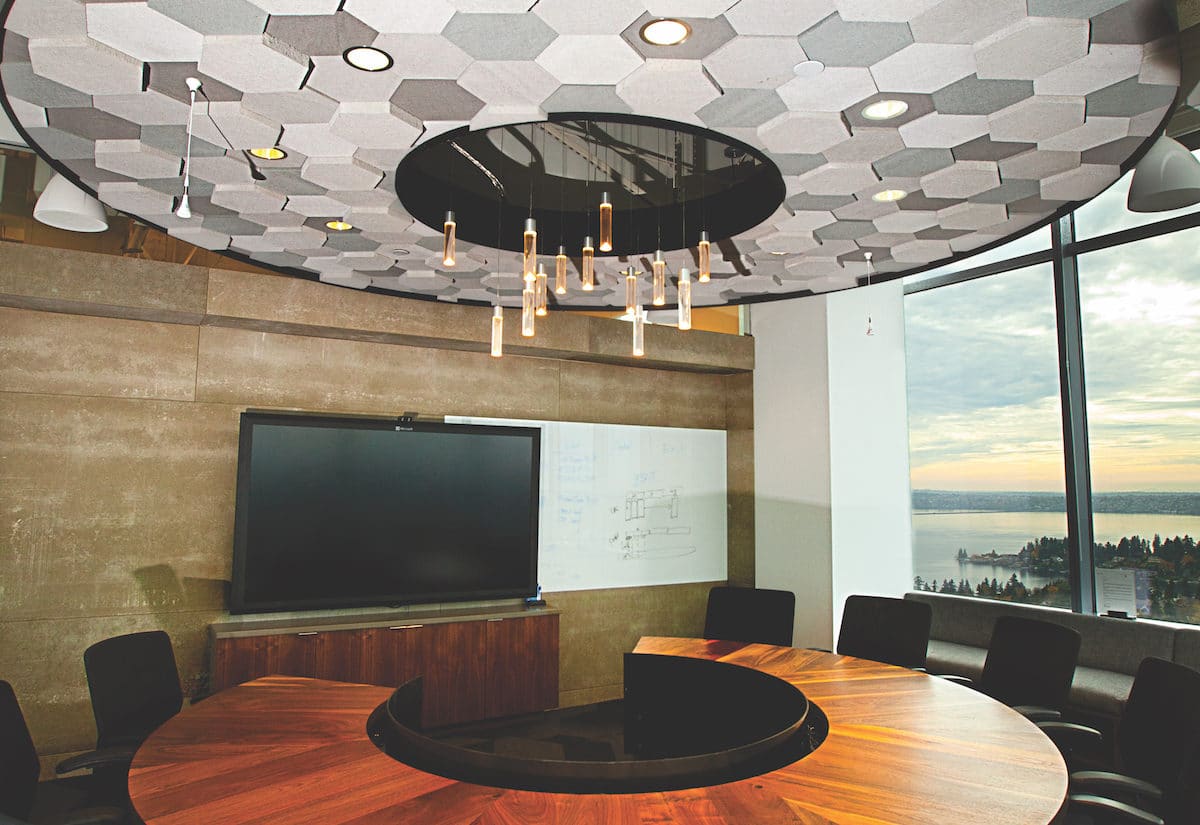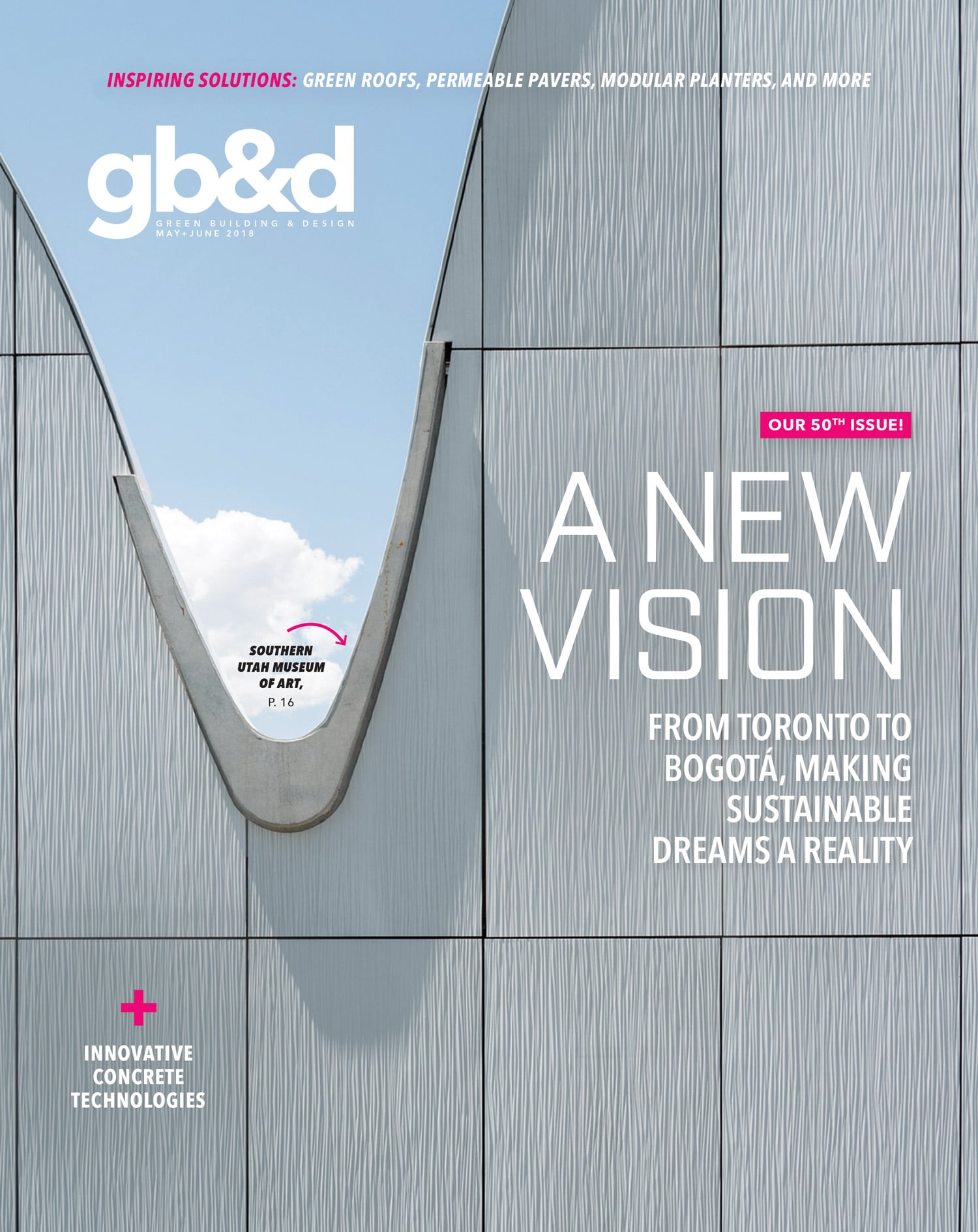
Forrest Sound Products thrives on projects where they can incorporate diverse materials. [Photo: Courtesy of Forrest Sound Products]
Forrest Sound Products takes the most difficult sound control challenges and turns them into art.
The project-based modularity of Seattle’s—and North America’s—vigorous tech scene doesn’t really lend itself to sound management, as projects and teams come and go frequently.
That’s why everyone from Google to Amazon to Microsoft calls on the Redmond-based Forrest Sound Products for help in keeping their spaces flowing while managing the boisterous sound of collaboration. This acoustical contractor is known for delivering turnkey, cost-efficient, and sustainable noise control services.
The Challenge
When Google was looking to expand its offices with open design in the Seattle suburb of Kirkland, Forrest Sound had already been a go-to vendor for half a decade.
“They wanted that open office feeling where they put groups in an area to feed off liveliness and to collaborate, but they needed to be able to control sound from carrying over to neighboring groups,” says Doug Bixel, Forrest Sound’s director of operations. “They developed a baseline standard of acoustic control but found the sound flowed too much.”
FROM OUR MAY+JUNE 2018 ISSUE
The preferred publication of leading green professionals.

[Photo: Courtesy of Forrest Sound Products]
The Solution
Bixel and his team entered the six-building Google Kirkland project with a concrete plan containing multiple wall and ceiling elements to help control sound while maintaining the overall openness of the space.
Varying ceiling and wall products create different moods across the modular spaces, which are open to reconfiguration as teams and company projects change. Forrest Sound Products used everything from more conventional acoustical tile and grid ceiling systems to more custom stretch fabric panels and separation walls at Google.
The products Forrest Sound features in Google’s spaces aren’t your average dropped tile ceiling, though. Custom wood and metal panel systems add a sophisticated finish, while sound diffusers and acoustic banners or clouds help to define space.
“Acoustical controls are the primary focus behind everything we do, but aesthetics come in next. We help to design and make beautiful spaces while achieving the acoustical needs,” Bixel says. The company thrives on projects where the team can flex those skills and play with material diversity.

[Photo: Courtesy of Forrest Sound]
F-Sorb Ceiling Panels
One of Bixel’s favorite challenges is taking a purely artistic or visual design decision and turning it into something acoustically functional. One of the more stand-out offerings in the Google project includes a product called F-Sorb—ceiling panels designed by Forrest Sound Products together with the manufacturer/distributor Nut Shell, are custom-made to fit a space’s acoustic needs.
“We can, in essence, tune the product for any acoustical absorption needs we have,” Bixel says. Moreover, the product is made from recycled plastics and offers both thermal insulation and sound absorption. It is now a standard feature in buildings used by nearly every major tech company in North America.
For Tableau, one of the latest West Coast tech standouts, F-Sorb helped Forrest Sound Products develop a plan based around situational acoustics. It’s a term Bixel uses to describe the placement of acoustical controls where they make the most impact. “With the proper placement of sound absorbing panels, the desired effect can be achieved with less product,” he says.
In Tableau’s case, less meant about a 30% reduction in control materials. By working closely with the interior designers and architects, Bixel and his team were able to establish a baseline system of acoustic control using processes like furniture layout and then supplement the rest of the space’s needs with their own product solutions. “We like difficult,” Bixel says. “Anything that provides challenge is fun.”

[Photo: Courtesy of Forrest Sound Products]
The Ethos
“We’re willing to get into the weeds about acoustical issues and figure it out,” Bixel says. That key focus on problem-solving service, mixed with an eye for design and aesthetics, keeps companies like Google coming back. Forrest Sound is on-call for another expansion of the Kirkland campus, planned in the next year or two.
Forrest Sound’s reach extends far beyond its architecturally focused tech projects, though. It expands into industrial work, too. As perhaps a testament to the company’s desire to get its hands into the mire of sound control, Forrest Sound Products is working on numerous hydroelectric dams for the U.S. Bureau of Reclamation throughout the Northwest and beyond. With Weyerhaeuser, Bixel and the team are working on lumber mills. Forrest Sound’s work has been featured in airports, factories, hospitals, and even shipyards up and down the West Coast and as far north as Alaska. “We will do anything and everything acoustical,” Bixel says.

[Photo: Courtesy of Forrest Sound Products]
Learn the Lingo
There are two elements to sound control that businesses like Forrest Sound consider. The first is noise reduction coefficient, which looks at controlling sound within a space by absorbing or softening it.
Second is sound transmission class, or STC. STC measures the blockage of sound between spaces. “In our space, we’re having a lively conversation at 70 decibels, and in the next space over, they need the quiet. If we don’t cut that sound down by 20 decibels, they’ll feel the effect of what we’re doing,” Bixel says. “STC is about the guy next door.”


